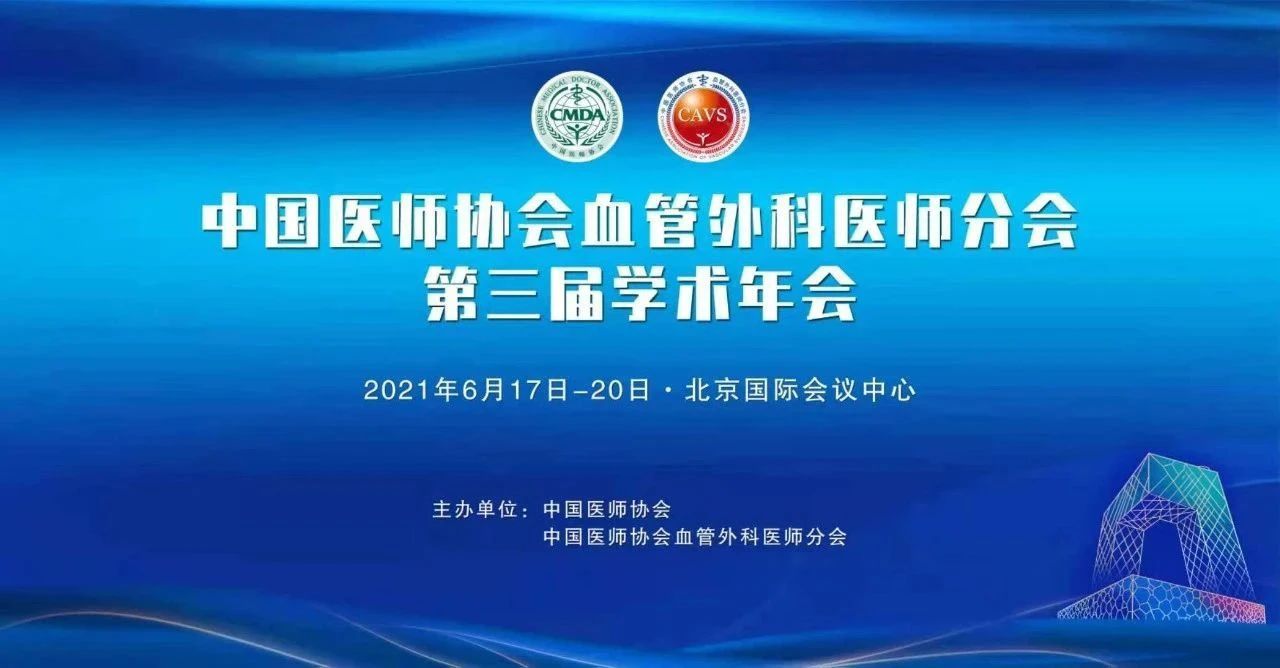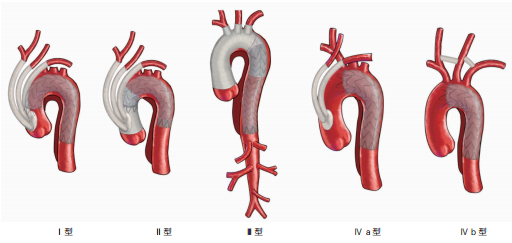
According to the National Vascular Surgery Quality Control Expert Group, between 2016 and 2020, the volume of TEVAR/EVAR procedures in China has been on a yearly rising trend, e.g., the total number of procedures in 883 hospitals nationwide will be more than 64,000 in 2020. The volume of open surgeries for aortic diseases also shows an increasing trend, but the absolute number and growth rate are relatively flat. The single-center data from Fu Wai Hospital, Chinese Academy of Medical Sciences (FWH, Chinese Academy of Medical Sciences) also shows this trend. on June 17-20, 2021, at the 3rd Annual Meeting of Vascular Surgery Physicians Branch of Chinese Physicians' Association, Prof. Luo Mingyao from FWH, Chinese Academy of Medical Sciences, on behalf of Prof. Shu Chang's team, made a wonderful presentation on the progress of aortic disease treatment.

Ascending aortic reconstruction technique
The IRAD study showed that 67% of acute aortic coarctation was TAAD, while surgery was contraindicated in 20% of TAAD. Statistically, the in-hospital mortality rate of TAAD patients unfit for surgery was consistently higher than 60% between 1996 and 2013. Endoluminal therapy became a possible option for 20% of acute TAAD patients who were not suitable for surgery. In addition, some studies have shown that the percentage of TAAD patients with anatomical features that qualify for endoluminal treatment is 30% to 40% when considering their imaging alone.The IRAD study also confirms that TEVAR is able to achieve a more favorable early outcome in a portion of rigorously screened patients with type A aortic coarctation who are unable to tolerate open surgery.
Given the rapid development of TEVAR technology, the Endo-Bentall/Endo-Wheat technology concept was proposed at least as early as 2017, with the aim of investigating how to perform a one-time endoluminal repair of surgically high-risk aortic root and ascending aortic lesions.In 2020, South American physicians performed the world's first Endo Bentall procedure with success.
Aortic Arch Partial Branch Reconstruction Technique
Diseases of the aortic arch involving important branches are one of the difficulties in the treatment of aortic diseases at this stage. Procedures for dealing with such lesions include open surgery, endoluminal surgery, and hybridization surgery, and each of these three categories has its own strengths and complements each other. Therefore, Prof. Shu Chang proposed the "HENDO" therapeutic technology system for aortic arch lesions at the China Vascular Congress 2019 (CVC 2019), which includes Hybrid Arch Repair, Endovascular Repair, Endovascular Repair, Endovascular Repair, and Endovascular Repair. HENDO" system of treatment techniques includes Hybrid Arch Repair (H), Endovascular Repair (Endo), and Open Arch Repair (O), and it is believed that the aortic diagnosis and treatment team can choose the best surgical treatment for different patients by mastering the above three types of techniques.
1、Hybridization surgery combines the features of open surgery and endoluminal technology, which can effectively treat aortic arch lesions, and can also simultaneously deal with aortic root and ascending aortic lesions, which can reduce the incidence of postoperative complications in high-risk patients undergoing traditional open surgery. 2007, Fu Wai Hospital of the Chinese Academy of Medical Sciences set up Asia's first cardiovascular hybridization operating room; up to 2020, more than 700 cases of type I, II, III, and IV hybridization surgery of the aortic arch have been successfully performed. By 2020, more than 700 hybridization surgeries of aortic arch type I, II, III and IV have been successfully performed. In view of this, academician Hu Shengshou initiated and acted as advisor, and Fu Wai Hospital of Chinese Academy of Medical Sciences took the lead, with the participation of more than 30 specialists from more than 20 institutions across the country to formulate and publish the "Chinese Expert Consensus on Hybridization Techniques for Treatment of Aortic Pathologies Involving the Arches," which categorized hybridization surgeries for the treatment of diseases of aortic arch into 4 types (Figure 1), which is in line with international academia and embodies the characteristics of China.

Figure 1. Chinese staging of Hybrid aortic arch repair
2、Endoluminal surgery includes open-window technique, parallel technique and branch stent technique. In recent years, endoluminal devices have been constantly innovated and advanced to optimize the efficacy of endoluminal surgery and reduce the complication rate. The Longuette™ Skirt Stent, designed to eliminate leakage in parallel stents, has completed multicenter clinical trials with satisfactory early follow-up. Window-opening technology is divided into extracorporeal window-opening and intracorporeal window-opening technology, and several domestic units are actively carrying out this technology and have formed a certain influence in the international arena. And the branch stent technology conforms to the anatomy of the arch and reduces the occurrence of endoleak in principle.In 2017, the domestic Castor single-branching type aortic overlay stent was listed on the market. In the future, the development of better arch multi-branch endoluminal reconstruction devices will be an important research direction.
3、Open surgery is able to address anatomically complex aortic arch lesions, and its mortality rate has been gradually reduced with advances in technology and updated equipment. According to IRAD statistics international multicenter data, from 1995 to 2016, the surgical mortality rate decreased from 25% to 10.7%. At Fu Wai Hospital of the Chinese Academy of Medical Sciences, the 30-day mortality rate for total arch replacement surgery has been lower than 5%. Therefore, for non-surgical high-risk patients, especially young patients, traditional open reconstructive surgery of the arch has a definite efficacy and can be preferred for patients with total arch involvement. Especially with the increasing research in small-incision surgery, shortening of deep hypothermia off-circuit time, and reduction of complications in open aortic arch surgery, this procedure will surely occupy an important position in the future for a long time.
Thoracic descending aortic reconstruction technique
For the treatment of TBAD, endoluminal repair surgery has become a mainstream procedure. However, the timing of treatment is still controversial. Some experts believe that the aortic wall is fragile in the acute stage and lacks elasticity in the chronic stage, and the risk of reverse tear TAAD is high, and the optimal time for surgery is 2 to 12 weeks. Another part of experts hold a different view, that in the acute stage, the endothelial sheet has high mobility, the true lumen is easy to open, and surgery within 10 days can help remodeling; and with the prolongation of the disease, the endothelium thickens, and it is difficult to mold well with the balance of pressure between the true and false lumens. Some experts also said that the timing of surgery should not be judged only by the stage of the disease, and that endothelial sheet mobility should be an important parameter in judging the stage of TBAD.
Although endoluminal repair of TBAD is well established, the following potential risks remain in the distal descending aorta: 1) aneurysmal dilatation caused by a distal remnant rupture: of 567 post-TEVAR patients from 17 centers around the world followed up for 31 months, aneurysmal dilatation due to aortic aneurysm or persistent perfusion occurred in 7.8% of them; 2) failure to relieve distal true lumen stenosis: persistent compression of distal true lumen, leading to distal ischemia, or excessive local blood flow velocity, affecting long-term prognosis and risk of re-intervention; and 3) new entrapment rupture (SINE) distal to the overlying stent: the study showed an incidence of 1.1% and a mortality rate of 28.6% (n = 650). In order to improve the distal remodeling of aortic coarctation, vascular surgeons have performed endoluminal technological improvements, such as the proposed Modified Petticoat technique. Related studies have shown a significant decrease in the rate of distal new ruptures in the Modified Petticoat technique group compared with conventional TEVAR (0% vs. 15%), a reduction in the rate of secondary surgical interventions, and improved mid- and long-term outcomes.
Aortic Repair Device Innovation
Aortic aneurysm" accounts for 50% of aortic diseases in Europe and the United States, while statistics from the National Vascular Surgery Quality Control Expert Group show that "aortic coarctation" is the most common aortic disease in China (75%). This shows that the type of disease and anatomical characteristics of patients in China are different from those in Western countries, which leads to different needs for stent design. A "straight" stent may not be suitable for most Chinese patients, and a "tapered" stent is preferred. The research and development of domestic aortic repair devices that meet the anatomical characteristics of Chinese people has been developing rapidly over the past decade, and to date, a number of domestic endoluminal repair devices have entered clinical applications, replacing imported products by a large margin.
Aortic Disease Treatment Outlook
For the treatment of aortic disease, surgery is the foundation and will be important for a long time; minimally invasive techniques are the trend, and major innovations in materials and endoluminal devices may lead to revolutionary advances in the field of endoluminal repair.
转载自《门诊》杂志


